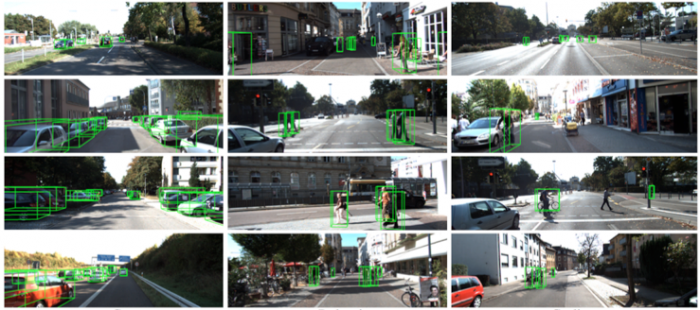Apple Just Gave a Private Demo of Its Latest Self-Driving Tech

At a private workshop held this week for AI researchers, Apple researchers gave a rare glimpse of some machine-learning technology they’re building for self-driving cars.
Speaking to an exclusive audience of researchers in the field, Ruslan Salakhutdinov, Apple’s director of AI, discussed several projects apparently related to automated driving.
The technical talks were given Friday during the Neural Information Processing Systems conference, the largest AI-focused academic event of the year, which was held in Long Beach, California. The event attracted thousands of researchers, including many from rival tech companies. The talks were designed to showcase Apple’s technical prowess and to woo potential recruits.
Salakhutdinov, who joined Apple in 2016 but still holds a post as a professor at Carnegie Mellon University, showed off a project previously disclosed in a paper posted online by Apple last month. This project trained a system to recognize pedestrians and other vehicles from 3-D point cloud information.
Other projects not previously revealed included a method for classifying different objects on the road using cameras placed on top of a vehicle, and a method of using camera footage to track its position very precisely. This technique, known as visual SLAM (simultaneous location and mapping), could be used for autonomous driving but also for augmented and virtual reality.
Apple has long been rumored to be working on automated driving. While the company hasn’t publicly acknowledged such a project, some details have leaked out. For example, the company has applied for a permit to test automated vehicles in California. Tim Cook, Apple’s CEO, has also all but confirmed the rumor, telling Bloomberg that the company is “focused on autonomous systems,” which he also described as “the mother of all AI projects.”
Carlos Guestrin, Apple’s director of machine learning and a professor at the University of Washington in Seattle, spoke after Salakhutdinov about several of the company’s large-scale machine-learning efforts, including that behind the face recognition system developed for the iPhone X.
Guestrin reassured researchers that working at Apple didn’t not mean you couldn’t publish research. He also announced that Apple was open-sourcing a tool called Turi Create that is designed to make machine learning easier. Guestrin joined Apple after his startup, Turi, was acquired last year.
Apple develops a range of machine-learning technologies for its products, but the company still discloses only a tiny amount of its research compared with competitors like Google and Facebook. Apple usually avoids talking about its research as a way to avoid tipping competitors off about future products.
It says much about the current battle between tech companies for machine-learning talent that Apple has abandoned this secretive culture and begun publishing machine-learning research and discussing some projects more openly. The company has even begun its own Machine Learning Journal, where it has published details of several AI-related projects.
Friday’s event attracted researchers from big universities and tech firms, including Google and Facebook. Nvidia, Uber, Microsoft, Facebook, and others threw lavish parties during the conference that were packed with researchers. Not to be outdone, Apple put on its own mixer several hours after the technical talk.
Keep Reading
Most Popular
Large language models can do jaw-dropping things. But nobody knows exactly why.
And that's a problem. Figuring it out is one of the biggest scientific puzzles of our time and a crucial step towards controlling more powerful future models.
The problem with plug-in hybrids? Their drivers.
Plug-in hybrids are often sold as a transition to EVs, but new data from Europe shows we’re still underestimating the emissions they produce.
Google DeepMind’s new generative model makes Super Mario–like games from scratch
Genie learns how to control games by watching hours and hours of video. It could help train next-gen robots too.
How scientists traced a mysterious covid case back to six toilets
When wastewater surveillance turns into a hunt for a single infected individual, the ethics get tricky.
Stay connected
Get the latest updates from
MIT Technology Review
Discover special offers, top stories, upcoming events, and more.